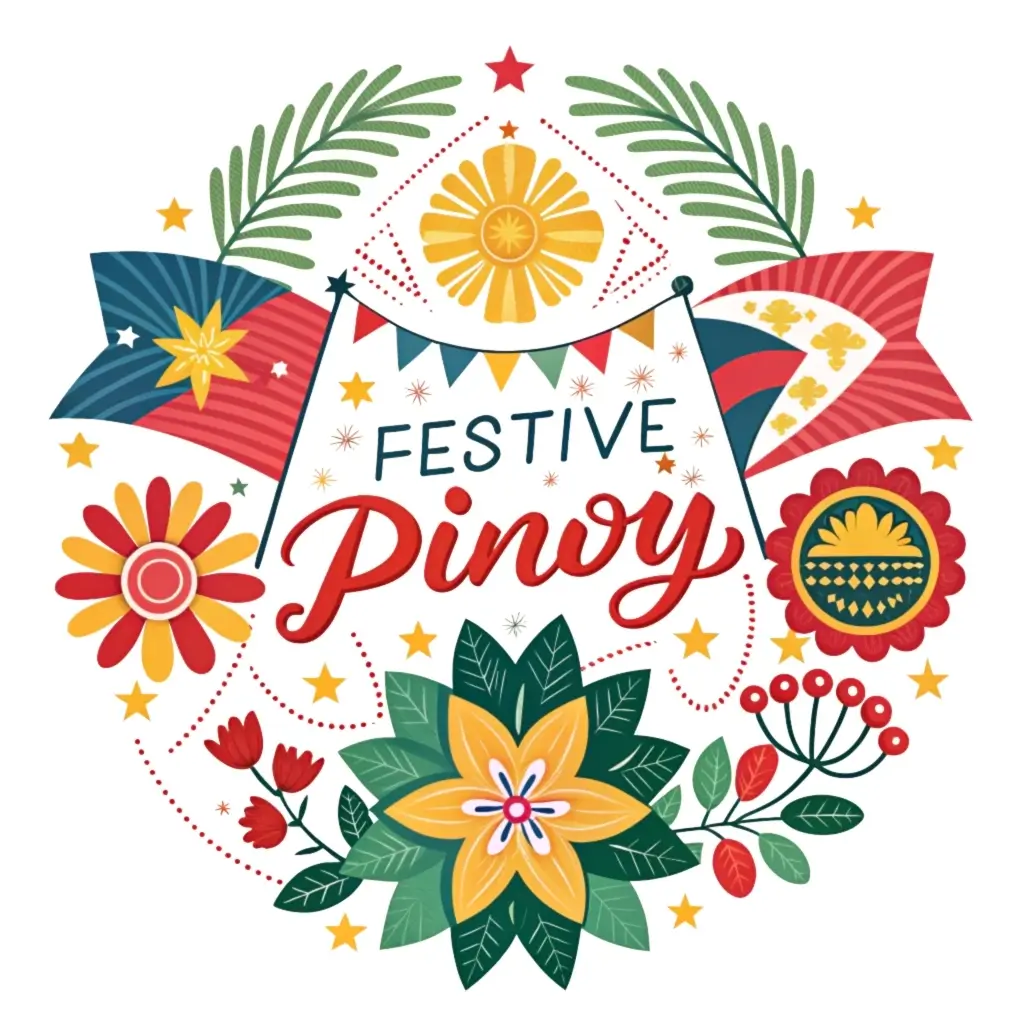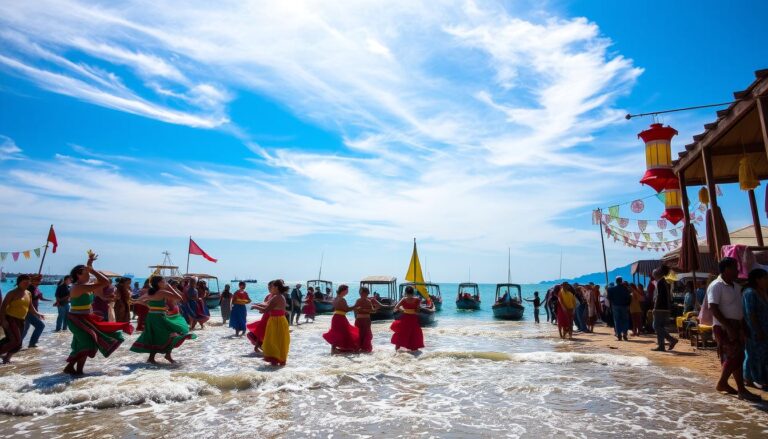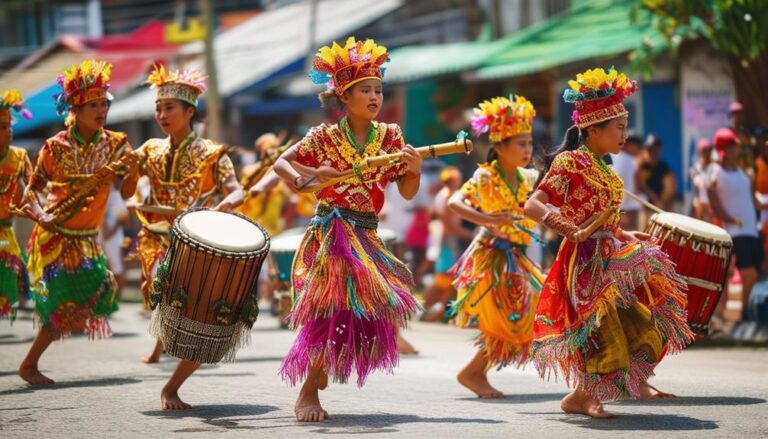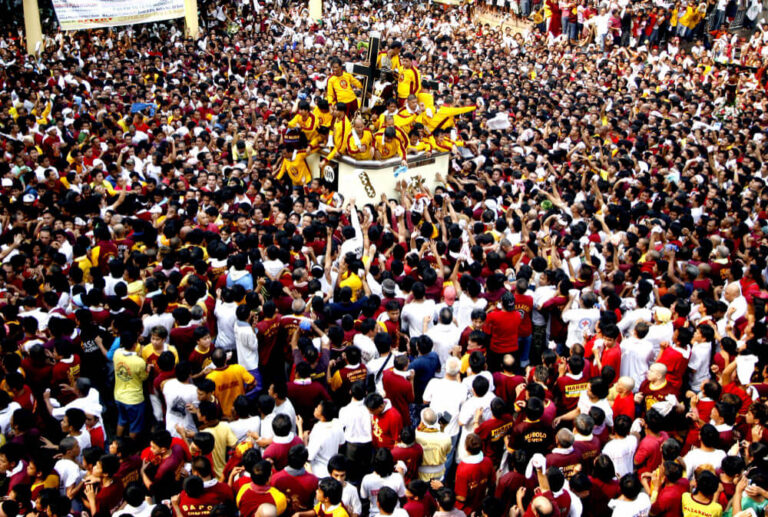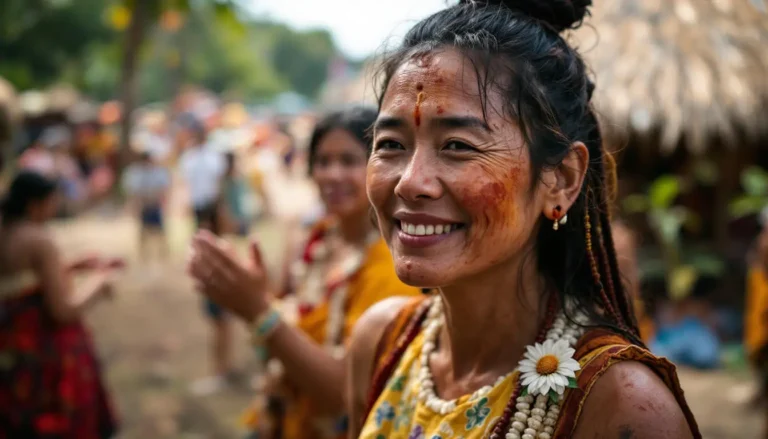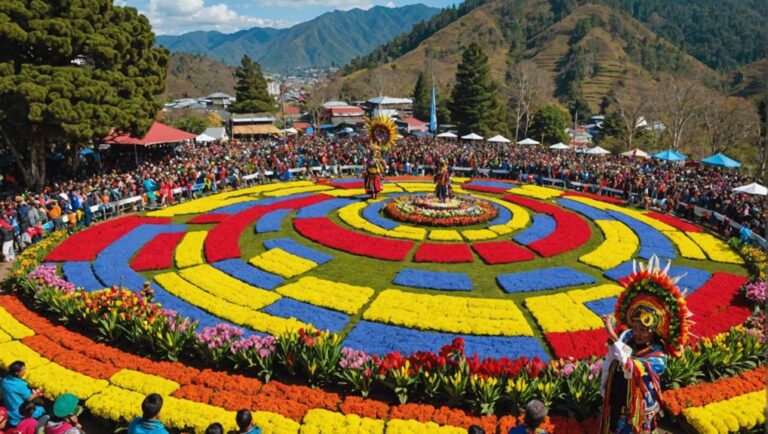Moriones Festival Philippines
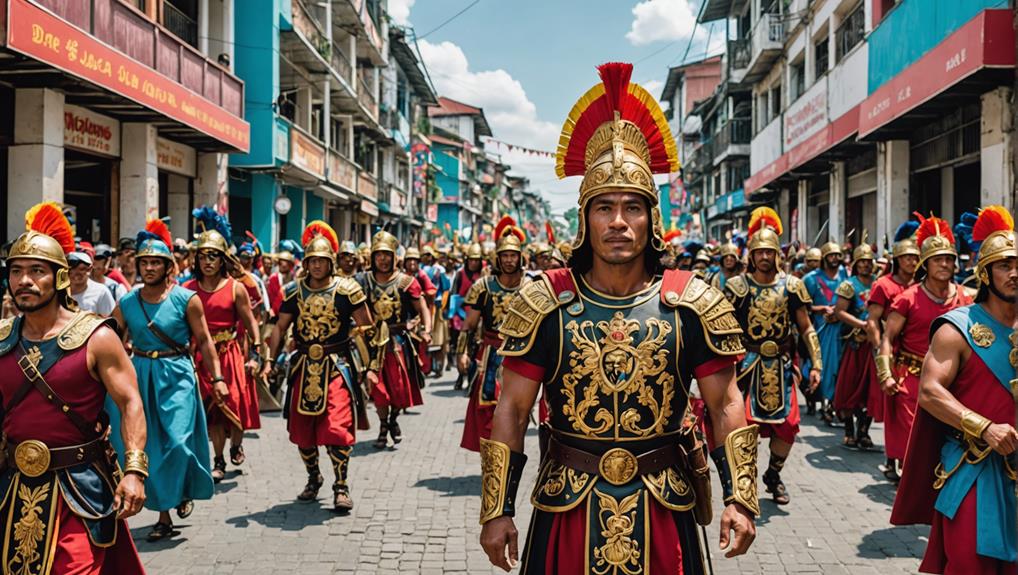
You'll discover the Moriones Festival on Marinduque Island, Philippines, vibrantly revealing during Holy Week. Participants don elaborately handcrafted masks and Roman soldier costumes, reenacting the biblical story of Longinus, a centurion at Christ's crucifixion. This cultural spectacle combines deep religious symbolism with impressive local craftsmanship. Each mask, carved by local artisans, is a masterpiece showcasing dedication and historical relevance. The festival's activities, including the Via Crucis and the grand resurrection procession, foster a communal spirit and highlight the transformative journey of faith and tradition. Exploring further will expose layers of cultural richness and spiritual insight.
Key Takeaways
- The Moriones Festival is an annual Holy Week event on Marinduque Island, Philippines, featuring participants in Roman soldier costumes.
- It centers on the reenactment of the story of Longinus, a centurion at Christ's crucifixion, highlighting themes of courage and redemption.
- Activities include the Via Crucis, a musical recitation of Christ's passion, and a grand procession culminating in a resurrection play.
- The festival showcases local craftsmanship through elaborately hand-carved wooden masks and handmade armor worn by participants.
- This cultural event fosters community engagement, strengthens local traditions, and attracts tourism, enhancing Marinduque's cultural identity.
Moriones Festival Overview
Every year during Holy Week, the island of Marinduque becomes the vibrant backdrop for the Moriones Festival, where participants don elaborate Roman soldier costumes and masks to reenact the tale of Longinus, a centurion whose life was transformed by witnessing Christ's crucifixion. This festival isn't just a mere celebration; it's a profound manifestation of costume tradition intertwined with religious symbolism.
The historical significance of the Moriones Festival can't be overstated. It roots back to a local tradition that vividly brings the biblical story to life, ensuring that the lessons of courage and faith aren't merely read but experienced. The Roman soldier costumes represent more than just historical attire; they embody the penance and burden that Longinus carried, which is central to the narrative. This transformation from a mere soldier to a witness of faith highlights the deep religious undertones of this Easter celebration.
Artistic craftsmanship is evident in every mask and costume. Local artisans spend months meticulously carving and crafting these elements, which are paramount not only for their aesthetic appeal but also for their role in storytelling. This dedication to craft underscores Marinduque's commitment to preserving this unique form of cultural expression.
Amidst this, the festive atmosphere is palpable. The streets of Marinduque buzz with energy as the community gathers, not just to observe but to become part of a living tradition that has been passed down through generations. Therefore, the Moriones Festival stands as a spectacular fusion of faith, history, and art, celebrated in a way that only Marinduque can.
Festival Activities
Building on the vibrant backdrop of the Moriones Festival, the activities during Holy Week immerse participants and spectators alike in deeply engaging religious reenactments and rituals. You'll find the streets of Marinduque echoing with the solemn tones of the Pabasa, the musical recitation that vividly narrates Christ's passion. This traditional chant resonates deeply, drawing you into the reflective mood of the season.
As the week progresses, the intensity of the festival amplifies with the Via Crucis, a poignant reenactment of Christ's suffering and journey to Calvary. It's a visceral experience, where you see firsthand the dramatic portrayal of the Stations of the Cross, culminating in the crucifixion reenactment. This particular event not only depicts the physical agony but also invites you to contemplate the spiritual fortitude of Jesus.
The climax of the festival activities is the grand procession and the reenactment of Jesus' resurrection. The air fills with a mix of solemnity and jubilation as beautifully adorned religious images are paraded. Witnessing these scenes, you're not just a bystander but a participant in a centuries-old tradition that reaffirms faith and communal bonds.
Here's a breakdown of key activities:
| Day | Activity | Significance |
|---|---|---|
| Holy Week | Musical recitation (Pabasa) | Reflects on Christ's passion |
| Good Friday | Crucifixion reenactment | Emphasizes Christ's suffering |
| Easter Sunday | Resurrection reenactment | Celebrates Jesus' resurrection |
Each activity, adorned with the iconic Morion's costume, upholds a religious vow, marking a profound cultural and spiritual journey for both the community and its visitors.
Morion's Attire
During the Moriones Festival, participants don intricate, hand-carved wooden masks and armors, embodying the historical and spiritual essence of Roman soldiers. As you immerse yourself in the festival, you'll notice that each piece of traditional attire isn't just for show but a profound expression of penitence and faith.
At the heart of this unique tradition lie the wooden masks, meticulously crafted to represent the stern features of Roman soldiers. However, these masks aren't merely decorative. They play an essential role in the spiritual journey of the wearers, often local townspeople fulfilling a religious vow. The design of the masks intentionally limits vision, symbolizing the blinding effect of one's sins and the struggle towards redemption under the hot sun.
Here are some key aspects of the Morion's attire:
- Wooden Masks: Carved by local artisans, these masks are central to the transformation process, enveloping the wearer in a new identity.
- Handmade Armor: Typically constructed from scrap materials and local fabrics, the armor reflects resourcefulness and dedication to tradition.
- Limited Vision: The small eye slits in the masks intensify the wearer's experience, focusing them inward on their personal acts of penitence.
- Exposure to Elements: Participants endure the heat, adding a physical dimension to their spiritual suffering.
This attire isn't just worn; it's borne out of a deep-seated reverence and spiritual commitment, making the Moriones Festival a profound cultural and religious event. As you watch these participants parade under the scorching sun, consider the weight of tradition and faith that each step carries.
Positive Message
While the Moriones Festival vividly showcases the physical challenges and spiritual devotion through its attire, it ultimately conveys a powerful message of courage, acceptance, and redemption. This message resonates deeply within the context of the festival's religious symbolism and historical significance. You witness a community united in a spiritual journey, where the reenactment of Longinus's story emphasizes courage and salvation. His transformation, marked by faith and culminating in his redemption, mirrors the personal transformations that participants and spectators may experience.
The festival's artistic expression through meticulously crafted masks and costumes not only highlights local craftsmanship but also serves as a medium for cultural immersion. As you observe these expressions, you're drawn into a vivid narrative that transcends mere spectacle, becoming a participative experience. This involvement is further deepened during the 'Via Crucis' and the climactic reenactment of Christ's resurrection, moments laden with emotional and spiritual depth.
Community participation is pivotal, turning the festival into a collective act of faith rather than an isolated observance. Each participant, whether donning a mask or watching from the sidelines, contributes to the overarching festive atmosphere, which is both solemn and celebratory. This atmosphere helps bridge the gap between tradition and contemporary relevance, making the historical and spiritual narratives accessible and impactful.
Through your engagement in the Moriones Festival, you're not just a spectator but a part of a living tradition. The festival offers more than just a glimpse into cultural heritage; it invites you into a transformative experience of reflection, celebration, and spiritual renewal.
Cultural Significance
The Moriones Festival, a unique tradition of Marinduque, not only preserves a rich historical narrative but also enhances the island's cultural identity by showcasing its exceptional local craftsmanship. You'll find that this vibrant event is deeply rooted in the historical and religious fabric of the community, making it a profound expression of cultural preservation.
The festival's significance lies in its ability to weave together various aspects of Filipino culture into an immersive experience:
- Local craftsmanship: Artisans exhibit their skills through intricately hand-carved masks and meticulously crafted costumes, turning the festival into a living gallery of traditional arts.
- Religious devotion: The reenactment of the biblical story of Longinus underscores the community's strong religious ties, with participants embodying their faith through elaborate rituals and performances.
- Community involvement: From the youngest to the oldest, the entire community engages in the festivities, fostering a sense of unity and pride. This collective effort highlights the communal spirit and the shared responsibility in keeping their traditions alive.
- Storytelling traditions: The festival is a dynamic form of storytelling, where history and religious narratives are passed down through generations, ensuring that these essential aspects of Marinduque's heritage remain vibrant and relevant.
Through these elements, the Moriones Festival not only boosts tourism but also educates visitors about the historical roots and artistic expressions of Marinduque. It serves as a validation to the resilience and creativity of its people, celebrating their identity while inviting the world to witness the richness of their cultural tapestry.
Visiting Marinduque
Exploring Marinduque offers you a firsthand experience of the island's vibrant culture and the enchanting Moriones Festival. As you immerse yourself in the festivities, you'll find that the local delicacies tell a story of their own. Dishes like the coconut-infused 'ulang-ulang' and the savory 'adobong manok sa gata' aren't just meals; they're narratives of culinary tradition passed down through generations.
While savoring these flavors, you can explore historical landmarks that are pillars of the island's identity. The Boac Cathedral, with its centuries-old facade, stands as a confirmation of the enduring spirit of the Marinduquenos. It's here amid these relics that the traditional music of the festival—resonant beats of indigenous drums and the melodic strumming of the guitar—enriches the historical ambiance.
Artisan crafts are also a highlight. In the local markets, intricate wood carvings and vibrant weavings reflect the community's artistic heritage. These crafts aren't merely souvenirs but symbols of the islanders' deep connection to their culture.
For the adventurous, island hopping presents a splendid panorama of Marinduque's scenic diversity—from the rugged outlines of Tres Reyes Islands to the pristine shores of Poctoy White Beach. These beach resorts offer a blend of relaxation and cultural immersion, where the sunsets are as breathtaking as the folklore tales told by the locals.
Moreover, engaging with the community through volunteer opportunities adds a layer of profound connection to your visit. Participating in coastal clean-ups or helping in local schools can enrich your experience and foster meaningful interactions. This engagement not only deepens your understanding of the island's ethos but also embeds you within the fabric of Marinduque's communal life.
Frequently Asked Questions
How Can International Tourists Participate in the Moriones Festival?
You can participate by renting costumes, studying the festival schedule, and following local etiquette. Seek accommodation advice, dietary options, and a language guide. Observe photography rules to respect the event and culture.
What Are the Age Restrictions for Participants in the Festival?
You'll find no specific age restrictions for participants, but registration and age verification guarantee adherence to costume regulations, reflecting the festival's cultural significance and its roots in local traditions and historical origins.
Are There Specific Safety Measures in Place During the Festival?
Yes, specific safety measures include crowd management strategies, emergency response teams, accurate festival signage, effective communication channels, traffic control, first aid stations, lost and found centers, and weather preparedness plans.
How Does the Local Community Benefit Economically From the Festival?
You'll find that local economies thrive during festivals through vendor opportunities, accommodation rentals, and increased food sales. Souvenir production, guided tours, and transportation services also see a boost, alongside festival marketing and cultural workshops.
What Other Cultural Events Occur in Marinduque During Holy Week?
During Holy Week, you'll find church visits, passion reenactments, and procession routes. Artisan crafts and local delicacies abound, while community prayers, historical tours, and night vigils enrich the cultural experience in Marinduque.
Conclusion
As you leave Marinduque after experiencing the Moriones Festival, you carry with you a deeper understanding of faith's power and community's spirit.
This festival isn't just a tourist attraction; it's a vibrant expression of cultural identity and historical continuity. Each mask, chant, and procession deepens the communal bonds and reaffirms spiritual commitments.
In immersing yourself in this tradition, you've glimpsed the profound interplay between shared history and personal belief, enriching your appreciation of this unique cultural tapestry.
